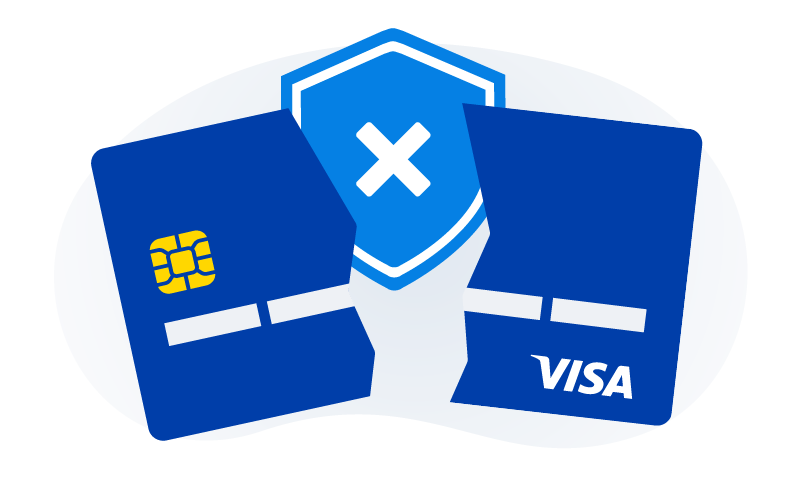Visa Stop Payment Service
Empower cardholders by helping to provide more control over card-on-file payments
available for use by
Issuer Banks
Regional Availability
View Details- N. America
- Asia-Pacific
- Europe
- CEMEA
- LAC
fees & terms
Free to use in Sandbox. Contact for Production fees. Product terms located at end of the page.

Empower cardholders by helping to provide more control over card-on-file payments
The Visa Stop Payment Service (VSPS) enables Visa card issuers to stop card-on-file payments (including recurring and installment payments) from being authorized, cleared, and settled through VisaNet. The service can help to provide Visa issuers with a method for handling cardholder stop payment requests.
Key Features
Give your customers a path to stop unwanted card-on-file payments.
Build stop payment capability into your front and back office workflows.
Why Use It?
Offers a Wealth of Benefits to Issuers
- May help enable issuers comply with regulatory obligations when consumers instruct them to stop payments from debiting their accounts after contacting the merchant.
- Can reduce the need for issuers to process chargebacks.
- May improve the cardholder experience for card-on-file payments.
- Can help reduce recurring payments operational costs.
Can Benefit Acquirers, Too
- Provides acquirers and their merchants with descriptive authorization decline response codes and return reason codes.
- Helps reduce chargebacks and authorization declines by providing information that a stop instruction is on file.
- Encourages consistent handling of stop payment instructions and revocation of authorization orders.
Can help provide Cardholders with Convenience and Control
VSPS can be used to give cardholders a way to stop future card-on-file payments from debiting their accounts, facilitating more control and convenience. Visa provides a capability that can be integrated within an issuer's back-office or call center application to allow the cardholder to initiate stop payment requests.
Keeps Merchants Informed While Helping to Reduce Chargebacks
Upon the first decline, VSPS lets acquirers and their merchants know that a cardholder has withdrawn consent for them to take payment from their card. This communication can enable consistent handling of stop instructions, which may reduce chargebacks. Merchants are not expected to resubmit an Authorization Request following receipt of an R0, R1 or R3 Authorization decline response code from VSPS.
How Does It Work?
Through this service, issuers can place stop payment instructions in the VisaNet Cardholder Database (CDB) in line with a cardholder's request. When an eligible transaction is matched to a stop instruction during Authorization, a decline response code informs the acquirer that the cardholder has withdrawn their consent for payment to be taken from the card. Acquirers are expected to pass this decline response code through to the merchant, and the merchant is not expected to resubmit the Authorization Request. If the transaction is submitted unauthorized for clearing and settlement, VisaNet will again attempt to match and return the transaction to the acquirer with the corresponding return response code.
The process for stopping a payment is as follows:
- The issuer creates a stop payment instruction using the VSPS APIs on VDP, or the VSPS user interface on Visa Online.
- The instruction is allocated a unique ID and at a minimum needs to contain the Visa card number, the stop payment type, a merchant identifier (Card Acceptor ID, Merchant Name, Payment Facilitator ID or MCC) and the active date range. It may optionally include additional transaction identifiers to help ensure that only the intended payments get stopped, such as minimum and maximum transaction amounts.
- VisaNet matches authorization and clearing messages based on:
- Transactions identified as "eligible" for stopping.
- Matching criteria defined in the stop payment instruction.
- If a match is identified, VisaNet:
- Declines an authorization request with a specific response code, either R0, R1 or R3 and sends an advice to the issuer.
- Returns a clearing message to the acquirer with a specific return/reclassification reason code, either C0, C1 or C2.
- Stopped transactions are assigned back to the specific stop instruction ID, allowing stop instruction performance to be assessed later using the VSPS UI.
APIs Included
Search and Retrieve Stop Instructions
A general search for stop instructions will return all active Stop IDs against a specified card number (PAN). Use of the Stop ID can then help to retrieve the full details of a specific stop instruction to inform further API functions such as updating or cancelling.
Search for Eligible Transactions
This enables a search for VSPS-eligible transactions on a specific card for a defined period of time, from 30 to 180 days. Two years of transaction data are available, to the extent applicable. The data returned will include the merchant identifiers used in previously processed transactions.
Add Stop Instructions
New stop instructions can be created hereunder. Three levels are supported - Merchant level (including "R0" and "R1" types), MCC level ("R1") and PAN level ("R3"). For Merchant level, you may use the merchant identifiers obtained using the Eligible Transaction Search API.
Cancel Stop Instructions
Existing stop instructions can be cancelled with the help of this API. Used together with the Retrieve Stop Instruction API, this can allow payments for the specified merchant to be restarted and prevent future transactions from being stopped.
Update Stop Instruction
A single Merchant or MCC level stop instruction may be updated. If the merchant identifier (such as the CAID) is updated then a new Stop ID will be created. If non-matching criteria (such as Notes) are updated then the original Stop ID will be retained.
Extend Stop Instructions
Can be used to extend the End Date of a stop instruction to keep it active for longer. This may be useful if the merchant is continuing to try to take payment from the card and may help reduce future chargebacks. The original Stop ID will be retained.